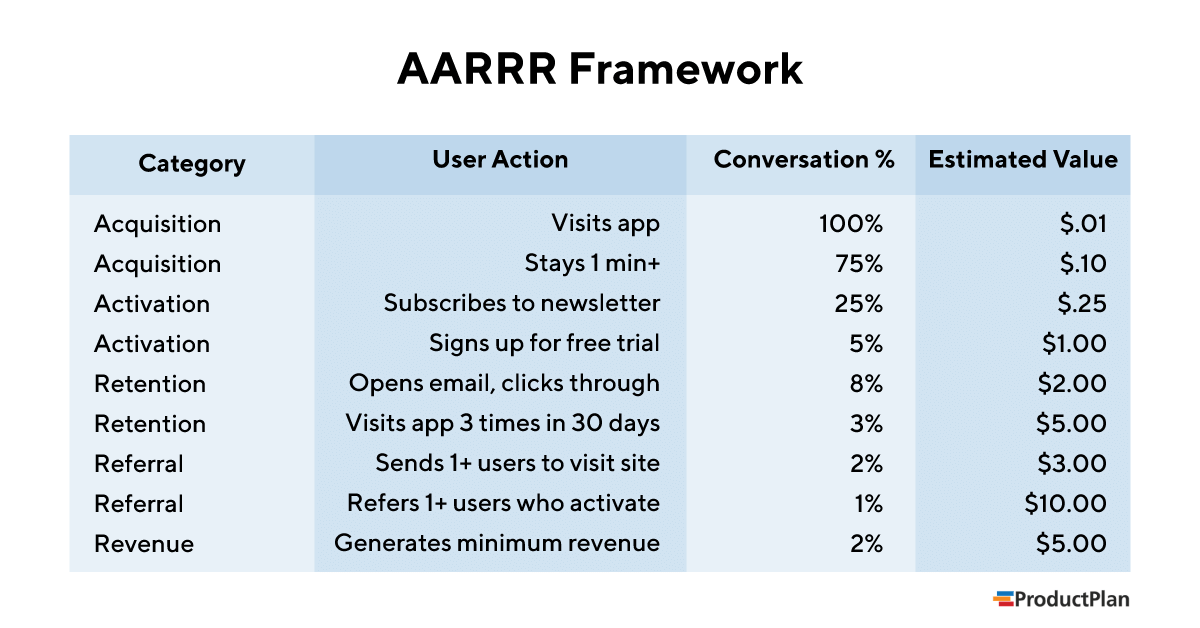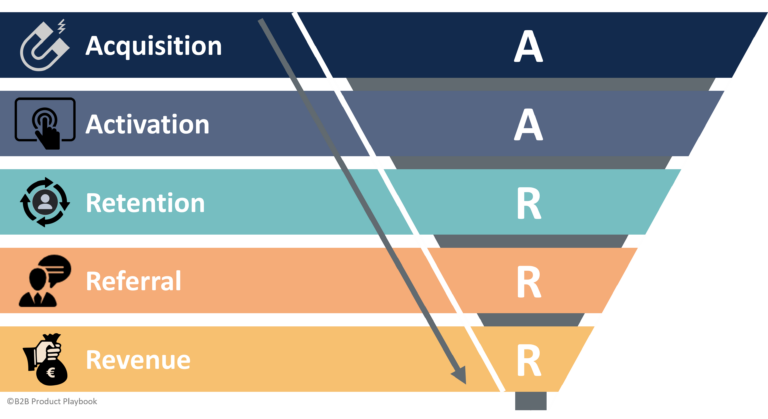Pirate Metrics Framework
For digital products, measuring success and growth is essential. The so-called Pirate Metrics is a framework of five user-behavior metrics that provides a structured approach to measure, analyze, and improve the usage of a product across different stages of the user lifecycle.
Acquisition (or Awareness)
To start with, how are potential customers discovering our product, and how effective can we make them aware of our offering? Typical metrics include website traffic, click-through rates, or cost per lead.
Activation
Of the acquired potential customers, how can we measure whether they take some of the desired actions, for example by signing up for a newsletter, creating a user account, or even completing a purchase?
Retention
After the initial activation, it is crucial that customers keep engaged with the product – as represented by retention rates and measured by way of churn rates, customer lifetime value, or frequency of using the product.
Referral
For organic growth and low customer acquisition costs word-of-mouth plays a key role. Customers should not only use the product but also tell others about their great experience. Metrics include conversion rates, referral traffic, and customer satisfaction scores.
Revenue
Finally, users, even returning users, are of little value if they don’t bring in revenue for the company. Hence, companies need to focus on optimizing their revenue streams, for example by up-/cross-selling as well as tracking average order value, customer acquisition cost, and overall revenue growth.
There are some variations of the framework, e.g. sometimes Referral and Revenue swap places, or Acquisition and Awareness become separated stages. The overall concept remains unchanged.
In order to implement the Pirate Metrics Framework, you need to:
- Identify the specific metrics for these five stages of user behavior.
- Track and analyze these metrics
- Constantly run tests across all stages to be able to improve and adjust metrics
- Use the data obtained to improve your product by way of strategic initiatives
Further Reading


Product Marketing for Pirates: AARRR!
Startup Metrics for Internet Marketing & Product Management
Dave McClure | Master of 500 Hats

What is the Pirate Funnel (AARRR framework)
And how to apply it in 5 quick steps?

